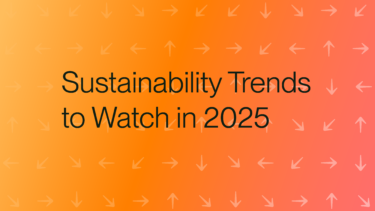
How to maintain momentum
- Communicate your success
- Succinct review meetings
- Keeping regular meetings
- Cross-organisational support
- Collating monitoring information
Share this article
Implementing an Environmental Management System (EMS) is an important step in a company’s sustainable transformation journey. It guides the process for understanding environmental impacts and provides a framework for continually improving environmental performance through legal compliance, objective setting and tracking, and stakeholder engagement, among other topics.
Anthesis supports clients in implementing their new EMS, but what happens once this process is complete? In this article, we highlight how to get the most out of your new environmental management system post-certification.
How to maintain momentum
1. Communicate your successes
People love being part of something successful, so work with your comms team to help you share both the big and small wins. Talking about success encourages people to attend events, participate in training, and share ideas and feedback. A lot of environmental topics – like pollution, climate change, and waste generation – can feel daunting, so it’s helpful to highlight positive achievements when talking about environmental opportunities.
2. Keep management review meetings succinct
While it’s an ISO 14001 requirement to meet all the management review elements, there are ways of minimising the need for top management’s time. Consider including required elements of your ongoing ISO 14001 commitments as part of other meetings – you don’t have to cover everything in one go. Additionally, be careful to read the exact wording of the standard – you don’t need to read out your entire policy each time, just summarise any changes. You can also highlight trends from your internal audits rather than discussing every finding.
3. Keep your core team meetings going at a regular time
It’s tempting to delay or cancel meetings when you’ve had a few people decline, but keeping these events at a regular timeslot reminds people that the EMS will continue to need support over time. It’s especially important to show team members outside of core EMS roles that their thoughts and ideas are valuable and wanted, and keeping a regular slot for this demonstrates its priority.
4. Cross-organisational support
Maintaining a successful EMS requires involvement from all corners of the organisation. Extending a collaborative hand out to others can help encourage their support in EMS processes, like an internal audit. For example, consider getting trained in a standard relevant to another department so you can audit each other’s management system. Additionally, try combining training requirements into a schedule that suits the teams they’re aimed at. If a team will need to attend chemical spill training in person, why not show them F-Gas equipment labelling requirements at the same time and see if their own operational training could be completed while they’re already out of production? Environmental management shouldn’t rest solely on the shoulders of one or two individuals.
5. Don’t put off collating environmental monitoring information
Have you just had 10 electricity bills, 6 gas bills and a waste report land on your desk? If you’ve got a good system in place, it shouldn’t take too long to select the important numbers from these and refresh your tracker. The sooner you spot variations in key environmental performance indicators, the sooner you can investigate the root cause, and the more likely it is you’ll find the correct one. This will enable you to keep an eye on how you’re progressing against targets as you go along, rather than having a big surprise at the end of the year.
How Anthesis Can Help
Anthesis offers a wide range of support for organisations looking to build on their sustainability credentials. We provide different levels of EMS assistance, including:
- Long-Term EMS Support: We offer ongoing support in the day-to-day management of an EMS, including regular check-ins to help guide the client, as well as in-depth practical management of the system.
- Full EMS Implementation: Following our 7-step process, we lead organisations through the full implementation of an EMS, from initial project inception to final external certification.
- Light-Touch EMS Implementation Guidance: We help clients set goals and provide training and guidance on how to fulfil each EMS requirement.
- ISO 14001 Readiness Gap Analysis: We conduct an objective gap analysis and provide clear guidance on next steps for improvement.
- Internal Audit: We act as an internal auditor for clients, reviewing an EMS and producing a compliant internal audit report.



